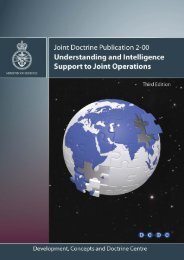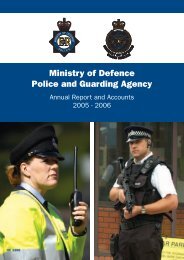Issue 9 Jan 2009.indd - Ministry of Defence
Issue 9 Jan 2009.indd - Ministry of Defence
Issue 9 Jan 2009.indd - Ministry of Defence
You also want an ePaper? Increase the reach of your titles
YUMPU automatically turns print PDFs into web optimized ePapers that Google loves.
support to ops<br />
20<br />
NEWSREEL<br />
Duchess tries<br />
out Mastiff<br />
The Duchess <strong>of</strong><br />
Gloucester discusses<br />
equipment<br />
THE Duchess <strong>of</strong><br />
Gloucester has visited<br />
the Contingency<br />
Operating Base in Basra<br />
to visit troops in theatre.<br />
While she was there the<br />
Duchess spent time with<br />
a Mastiff team learning<br />
about the weapons used<br />
at the front line. She was<br />
also driven in a Mastiff<br />
protected vehicle which<br />
was recently praised by<br />
troops for its safety.<br />
It’s a dog’s life<br />
in the services!<br />
THE Army has 165<br />
military working<br />
dogs and the RAF 292<br />
according to the latest<br />
fi gures for the number<br />
and type <strong>of</strong> animals kept<br />
in each <strong>of</strong> the services.<br />
Dogs are used for many<br />
tasks including patrol,<br />
explosive search,<br />
vehicle search and drug<br />
detection.<br />
The Army also has 489<br />
horses while the Royal<br />
Navy possesses 16 birds<br />
<strong>of</strong> prey.<br />
Regimental or unit<br />
mascots are also kept<br />
by the Army and include<br />
two Drum horses, one<br />
Indian Black Buck, one<br />
Irish Wolfhound, two<br />
mountain goats, two<br />
Swaledale rams and<br />
three Shetland ponies.<br />
Pay <strong>of</strong>fers<br />
DETAILS <strong>of</strong> the 2008<br />
industrial and nonindustrial<br />
pay <strong>of</strong>fers<br />
have been announced.<br />
The <strong>of</strong>fers are threeyear<br />
awards and will<br />
provide shorter pay<br />
scales with a three per<br />
cent pay step each year<br />
for the majority <strong>of</strong> staff.<br />
The aim is to pay the<br />
award and arrears in<br />
February. More details<br />
via the DE&S home page<br />
on the defence intranet.<br />
The cause is just – cult<br />
A ‘just’ culture<br />
should exist in<br />
the military to<br />
help servicemen<br />
and women<br />
have confidence<br />
in leadership,<br />
says Air Chief Marshal Sir Jock<br />
Stirrup, Chief <strong>of</strong> the <strong>Defence</strong> Staff,<br />
whose message has relevance for<br />
all branches <strong>of</strong> the services and<br />
the MOD.<br />
British doctrine identifies three components <strong>of</strong><br />
fighting power: conceptual, physical and moral.<br />
The physical – manpower, equipment, performance,<br />
readiness and sustainability – is easy to report<br />
against. Conceptual is guided by principles <strong>of</strong> war. Moral<br />
is more difficult to quantify but includes motivation,<br />
leadership, organisation, management and<br />
supervision.<br />
Get the moral component wrong and the<br />
impact on fighting power is disproportionate. In<br />
aviation terms, for example, such a failure can<br />
manifest itself during training through accidents<br />
when people make mistakes; or aviators not<br />
willing to exploit their aircraft and the nature <strong>of</strong><br />
their environment to the advantage <strong>of</strong> the overall<br />
campaign.<br />
We must strengthen the moral component<br />
by addressing the human factor, particularly in<br />
the context <strong>of</strong> where we want people to work,<br />
balancing the operational imperative to achieve<br />
our mission against the safety culture in which<br />
we expect them to operate. This is<br />
a difficult balance, even in benign<br />
circumstances. Such challenges<br />
increase during operations when<br />
our men and women work under<br />
more pressure to get the job done,<br />
and the propensity to make mistakes<br />
increases.<br />
Human factors are those which<br />
drive the way individuals and their<br />
interaction with other people, rules, procedures,<br />
tools and equipment or with the operating<br />
environment, influence the delivery <strong>of</strong> fighting<br />
power.<br />
Evidence shows that more than half our<br />
accidents and incidents are down to human<br />
factors; in other words it is our people who are<br />
causing most damage to our fighting capability.<br />
We must do something to understand these<br />
factors and drive down the number <strong>of</strong> accidents<br />
and incidents.<br />
One <strong>of</strong> the most effective ways <strong>of</strong> doing<br />
this is to promote a culture that encourages<br />
open and honest reporting, that allows for a<br />
structured investigation <strong>of</strong> errors which lead to<br />
an incident, and that takes ‘just’ action which is<br />
fair and measured. This action should address<br />
all individual, systemic and environmental issues<br />
relating to an incident and allow us to learn from<br />
what took place. The actions and feedback will<br />
prevent us making the same mistakes again. It is<br />
the justness <strong>of</strong> what we do that gives rise to a ‘just<br />
culture.’<br />
To me, such a culture is based on trust.<br />
It suggests a working environment where<br />
individuals are encouraged to<br />
‘We should have<br />
no truck with<br />
those who do not<br />
do their jobs<br />
properly’<br />
Dealing with subordinates fairly<br />
contributes to a key element <strong>of</strong> the moral<br />
component and a fundamental strand in<br />
the strategy to reduce accidents, which<br />
helps to maintain the best operational<br />
capability on the front line, says Air<br />
Chief Marshal Sir Jock Stirrup. Right:<br />
a member <strong>of</strong> the Royal Gurkha Rifl es is<br />
seen in action in Afghanistan<br />
contribute to providing essential<br />
safety information and where they<br />
are commended for owning up to<br />
mistakes as they try to do their<br />
best.<br />
It should promote a sense that<br />
they will be treated fairly and with<br />
integrity while we investigate why<br />
mistakes have been made to make<br />
sure we get things right next time.<br />
But it is not a blame-free regime where no-one<br />
is ever held to account. Everybody must be clear<br />
about where the line must be drawn between<br />
acceptable and unacceptable behaviour.<br />
I judge that the creation and proper<br />
maintenance <strong>of</strong> a just culture will promote<br />
confidence in our leadership, lead to more<br />
effective management <strong>of</strong> expensive and scarce<br />
resources and help motivate people through<br />
the belief they will be treated reasonably and<br />
equitably.


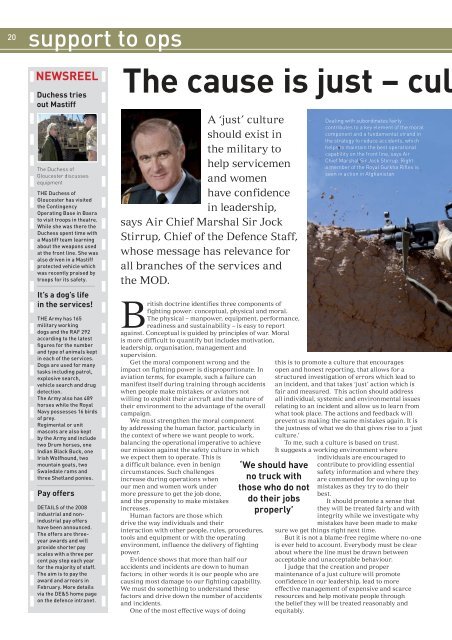
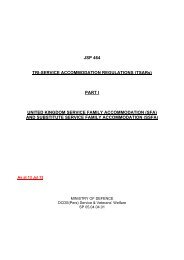
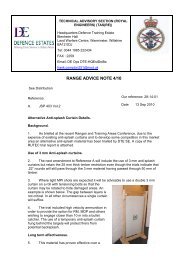

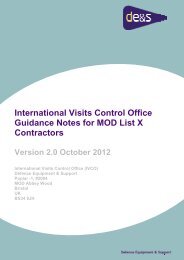

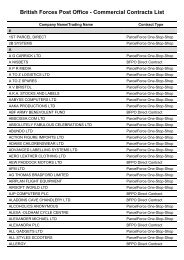

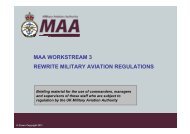

![MAA Regulatory Publications - FAQs PDF [37.3 KB]](https://img.yumpu.com/5906104/1/184x260/maa-regulatory-publications-faqs-pdf-373-kb.jpg?quality=85)
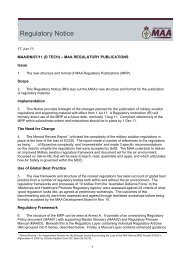
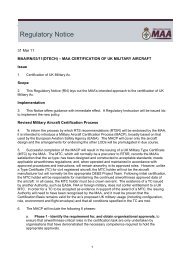
![3750 edition 6 PDF [263.5 KB] - Ministry of Defence](https://img.yumpu.com/5901071/1/184x260/3750-edition-6-pdf-2635-kb-ministry-of-defence.jpg?quality=85)
